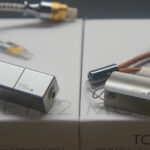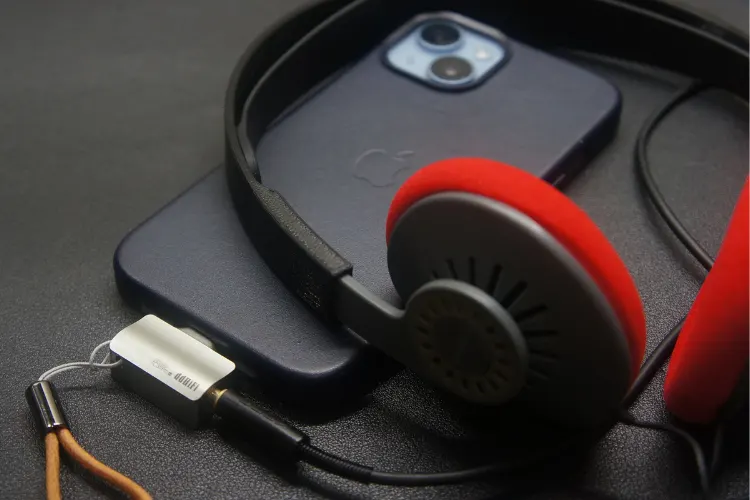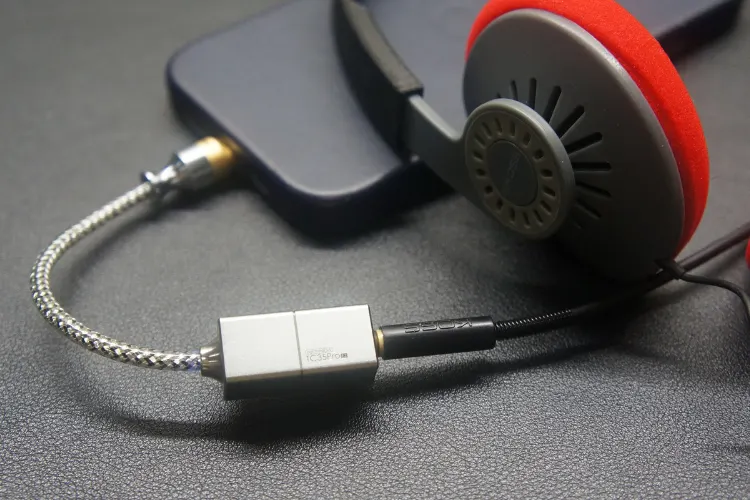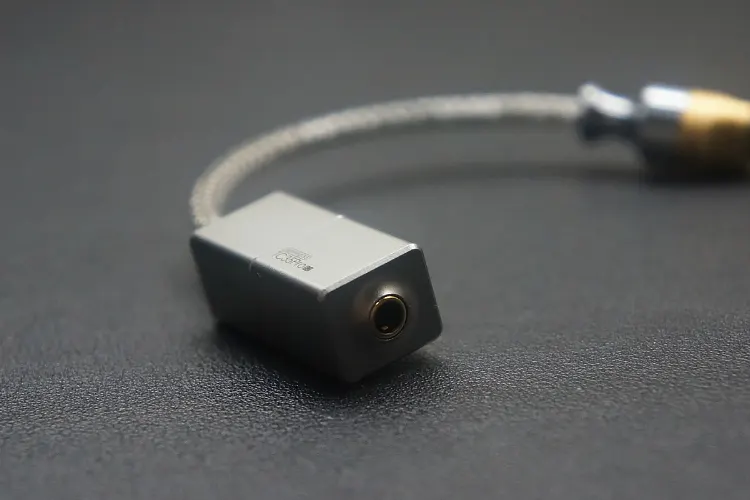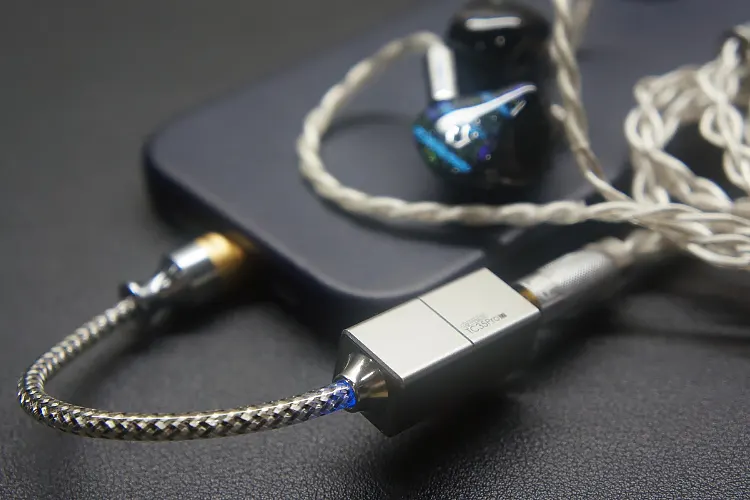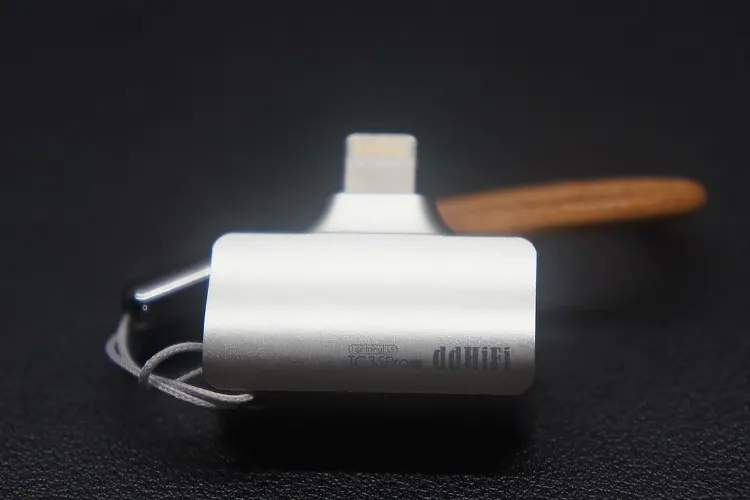We review the ddHiFi TC35Pro Eye2 & Mountain2, which are two affordable single-ended dongle DACs designed for use with Android and iOS devices. The eye2 is priced at $75.99 and mountain2 is priced at $65.99.
Disclaimer: This is a sample that was sent to us in exchange for our honest opinion. Headfonics is an independent website with no affiliate links. Many thanks to ddHiFi for their support
You can read about previous ddHiFi products we have previously featured on Headfonics here.
Note, that this article follows our latest scoring guidelines which you can read up on here.
ddHiFi is somewhat of an ‘indie brand’ to date but hardcore portable-focused audiophiles have come to associate ddHiFi for their extremely high-quality adapters, and cables such as the M120B which won our 2023 Bang For Buck Award for Best Cable just recently.
They also have a vast array of dongles DACs such as the TC44C. All are designed to improve the overall usability of one’s portable audio setup with minimal expenditure.
This time, ddHiFi has released the TC35Pro 2, the second iteration of their compact 3.5mm single-ended 3.5mm Dongle DAC.
Coming in either lightning or USB-C inputs, with two form factors, “Eye2” or “Mountain2”, let’s see if ddHiFi just released your latest audiophile EDC companion.
Tech Highlights
The ddHiFi TC35Pro 2 series of portable SE DAC/AMPs make use of Cirrus Logic CS43131 DAC, the same DAC chip used in the slightly pricier TC44pro balanced DAC/AMP.
This chip can natively decode up to PCM 32bit/384kHz and DSD256 formats. Both variations of the TC35Pro 2 use the ES9603Q amplifier chip so their respective SE output power is the same at 65mW+65mW into a 32Ω load.
Neither the TC35Pro Eye2 nor Mountain2 are the first, cheapest dongle DACs to make use of this DAC topography, however, they may very well be the best-built and designed iterations of such designs, whilst maintaining a good degree of portability and ergonomics.
The Mountain2 is constructed onto a single PCB, eliminating the need for cables that could introduce noise, points of failure, and increased size. The Eye2 connects the USB-C or lightning termination to the DAC body through the use of the ddHiFi TCO7 series of silver data cables.
Both the TC35Pro Eye2 and Mountain2 come in either a USB-C input or Lightning input variant, reducing the need for easy-to-lose adapters.
Design
Both the TC35Pro Eye2 and Mountain2’s design and build quality are excellent. Both shells are constructed from a dense-feeling aluminum alloy, expertly machined to give them ergonomic edges and curves.
According to ddHiFi, they gave both the TC35Pro Eye2 and Mountain2 “titanium” finish. Despite not being metallurgically accurate, it does give the luxurious impression of a piece of jewelry constructed out of anodized titanium.
Mountain2
Despite the relatively light 8.5g weight of the Mountain2, it feels extremely dense and high quality, similar to the TC44Pro 2. The Mountain2 essentially feels like a slightly smaller TC44Pro, weighing slightly less, and measuring slightly shorter in each dimension.
The top of the Mountain2 has a slight slope and is dominated by the sole input of the unit, a lightning connector. Note, that the TC35Pro2 also comes in a USB-C configuration, however, we were only provided with the Lightning Model.
The front of the unit is machined with an ergonomic curved finish, making it easy to hold. A small ddHiFi logo and an even smaller TC35Pro Mountain2 logo are also machined onto the lower right portion of the front.
The left of the unit contains the indicator LED and the lanyard hole. The indicator LED is dimly lit, but just bright enough to show when power and signal are supplied to the dongle. The LED shines green when playing DSD content and shines blue when playing PCM content.
The integrated lanyard hole is meant to be used with the included high-quality lanyard loop, making the dongle easier to use and hold in day-to-day use. On the other hand, the right side of the unit has the lone output, a 3.5mm SE output.
Eye2
In comparison, the Eye2 comes in a more typical dongle form factor, with a separate input connector and dongle body connected by a cable.
The main body of the Eye2 is in the shape of a rectangular prism, with a slightly indented division line going across the cross-section of the body. The expertly machined chamfered edges make it easy to hold and ergonomic in daily use.
The exceptionally machined slope housing the main body of the cable is a highlight as well. It’s smooth, satisfying, and never causes discomfort during usage. The main body is connected to the lightning or USB-C connector with the ddHiFi TCO7 series of silver data cables.
The cable itself is thick, dense, and not prone to memory. On the other side of the cable is the well-machined lighting connector that has an equally impressive slope. The edge of the metal connector is given a matte gold finish, making the stylized black ddHiFi logo visible.
I/O
The ddHiFi TC35Pro Eye2 and Mountain2 have a simple I/O. They have a USB-C/lightning connector on one end and a 3.5mm output on the other end.
The USB-C connector can be plugged into any device that supports USB audio, such as smartphones, tablets, laptops, or desktops, while the lightning connector can be used to connect the dongle to older iOS devices. The 3.5mm SE output can be connected to most headphones and IEMs.
The Eye2 and Mountain2 do not have any physical controls, such as buttons or switches. They rely on the source device playback functions. The Eye2 and Mountain2 do not have a built-in microphone, so they cannot be used for voice calls.
The Eye2 and Mountain2 have an LED indicator that shines green when playing DSD content and shines blue when playing PCM content. In practice, the LEDs are dim enough not to catch one’s attention, but just bright enough to indicate when the unit is on, and what kind of file is being decoded.
Packaging & Accessories
The Eye2 and Mountain2 come in a small and simple cardboard box, with a white background and a picture of the dongles in front. The box has the ddHiFi logo and the model’s name on the front, and some specifications and barcode on the back.
The Eye2 comes with a quick start guide and a warranty card. The Mountain2 comes with the same inclusions but also adds a leather lanyard.
The packaging and accessories are minimal but sufficient for the Eye2 and Mountain2. The user manual and warranty card are clear and concise, and the QR code is a convenient way to access the ddHiFi website.
Sound Impressions
Summary
Both the TC35Pro Eye2 and Mountain2 are powerful enough to drive most IEMs through their respective SE output, without sacrificing much in terms of staging performance or detail retrieval, especially with the upper mids to treble region.
They do not add much coloring, but both tend to accentuate details and resolution on the upper end of the frequency response. The unit’s low SNR makes it perfect for sensitive IEMs that require a little bit more power to maximize dynamics.
Timbre
The Eye2 and Mountain2 have identical sound signatures, with a neutral and balanced tonality, a clean and detailed presentation, and a smooth and natural timbre. They both have some added energy on the top end, but I never found them sibilant.
When paired with my Moondrop Blessing 3, I noticed a very slight yet pleasing bump in the sub-bass, however, I did feel like mid-bass drums and bass guitar strums felt a bit light, lacking a bit of note weight and texture. The bass drums hit with a good slam, but the texture and detail retrieval on the bass hits were a bit underwhelming.
The vocal presentation is quite forward for both male and female vocalists. Female vocals have a sparkly quality that highlights minute pitch and vocal techniques while still demonstrating good emotion. Once again, I never noticed any sibilance, but I also never found myself wanting more detail than the dongle could deliver.
Another standout is the TC35Pro 2’s ability to pleasantly articulate the electric guitar decay in rock tracks. It rides a fine line of being sibilant and sparkly, but I found it pleasing in every track I tested with.
Male vocals are still presented with good authority; however, warmer dongles still present them in a more atmospheric and authoritative manner. The unit does a good job of properly representing the vocal performance that a pair of IEMs or headphones are capable of.
Like its bigger, balanced brother, the TC44pro, both TC35Pro 2 dongles have a very clear and analytical presentation of the high-end. Hi-Hats and cymbals are played with enough detail to be easily distinguishable from one another.
Staging and Dynamics
Both dongles have a decent staging performance even when paired with slightly harder-to-drive IEMs like the Yanyin Canon II and Moondrop Blessing 3. When listening through the Yanyin Canon II, they can present a sense of width similar to more expensive desktop DAC/AMPs.
Additionally, they were also able to adequately drive smaller on-ear headphones such as the Koss KPH30i. When comparing to more powerful desktop DAC/AMPs such as the iFi Audio ZEN DAC V1, I noticed only a slight decrease in bass dynamics when compared to the TC35Pro 2 driving the KPH30i, whilst the staging performance remained identical.
However, it is not able to replicate the same soundstage performance on harder-to-drive headphones such as the Sennheiser HD 580 Precision.
Its dynamics are good as well. When doing A-B comparison testing between the unit and the onboard 3.5mm output of my phone and laptop, the first thing I noticed was how much better the dynamics are. Each instrument feels less compressed, making onboard audio seem dynamically flat.
Click on page 2 below for our recommended pairings and selected comparisons.


